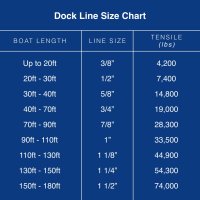A rope's maximum safe load, or working load limit (WLL), is a percentage of its minimum breaking strength (MBS). It's the maximum load a rope can safely handle under normal conditions before potentially failing. The WLL is calculated by dividing the rope's MBS by a safety factor, typically between 5 and 10. For example, a rope with a 2500kg MBS, using a safety factor of 10, would have a WLL of 250kg.
Here's a more detailed breakdown:
Minimum Breaking Strength (MBS):
This is the force required to break the rope. It's the maximum load the rope can withstand before breaking.
Working Load Limit (WLL):
This is the safe load the rope can handle in real-world conditions. It's usually a fraction of the MBS, typically between 15% and 25%.
Safety Factor:
A multiplier used to determine the WLL. It provides a safety margin, ensuring the rope doesn't fail under unexpected loads or conditions.
Factors that Affect Rope Strength:
Knots: Tying knots in a rope reduces its strength significantly, often by 30-40%.
Age and Wear: Ropes weaken over time with use and exposure to the elements.
Environmental Conditions: UV radiation, extreme temperatures, and moisture can degrade rope strength.
Type of Knot: The specific type of knot used can also affect the reduction in strength.
Example:
If a climbing rope has a breaking strength of 2000 kg and a safety factor of 10 is used, the working load limit would be 200 kg (2000 kg / 10 = 200 kg). This means the rope can safely support a load of 200 kg, but it is not recommended to exceed this load.





